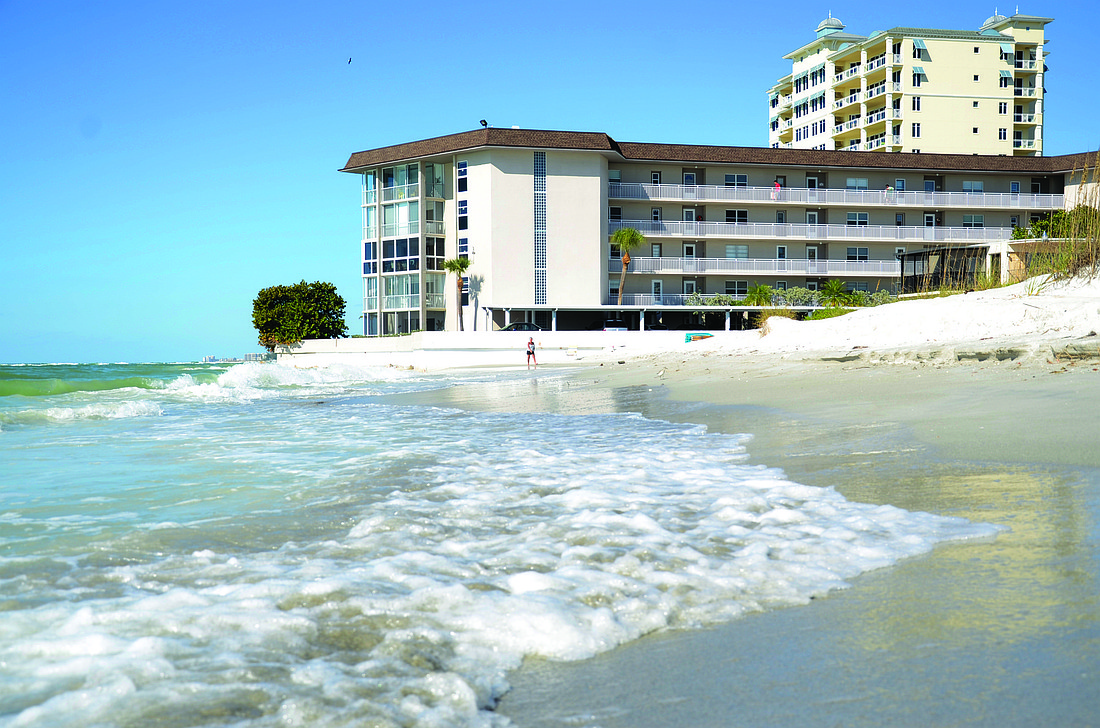- January 21, 2026
-
-
Loading

Loading

Although it’s not a final decision, the U.S. Army Corps of Engineers is considering a reduction to the groin set for installation off Ted Sterling Park on South Lido Beach.
Laird Wreford, coastal initiatives manager for Sarasota County, released the news at the Siesta Key Association meeting Dec. 4. Wreford said he’d received the information that afternoon.
“The Army Corps is offering up a less-intensive third groin, and a future discussion about if there’s even a need,” Wreford said after the meeting.
Wreford said the third groin had been a point of concern for the community in that it might impact users’ park experience, especially if the groin became unburied after erosion — the groins will be placed just below the surface of the sand. Residents have voiced these concerns during public meetings and workshops surrounding the Big Pass dredge for Lido Beach renourishment.
“They’ve heard loud and clear that it is an issue,” Wreford said about the Corps.
Alex DavisShaw, city of Sarasota engineer, said neither the city nor the county had received any revised designs yet, but expected the Corps to submit them in January.
The Corps hadn’t given specifics, but the idea would be to see if a narrower and shorter third groin would help prevent any negative impacts to recreational activities on the park’s shoreline or wildlife habitat, Davis Shaw said.
Aside from a possible redesign, the county has still not selected a third party independent reviewer for the Corps’ analysis of the Big Pass dredge. The county unanimously approved to select a third party reviewer at its Aug. 20 meeting, and included the stipulation that community input would be used to define the scope of work for the firm to complete.
Wreford said staff was in the process of compiling community input and developing the scope of work the reviewer would need to do. Then, the county will write up the basis of the contract before selecting a firm from the pre-approved list of seven firms.
Through community input, Wreford and his staff have identified three main areas of concern for the effect of the dredge: user experience at Ted Sperling Park, waterway navigation and Siesta Key’s beaches.
“We’d like to come out with a beautiful, renourished Lido with no impact to Siesta Key,” Wreford said at the SKA meeting.
Ideally, a firm would be selected by January, Wreford said, however if the county decides the preselected firms are not eligible to act without bias, the project would have to be put out to bid and the process would be extended another couple of months.
Wreford said the dredge was easily two years out from completion.
Catherine Luckner, a member of SKA who has been involved in the community input for Big Pass, said she was glad the county sought the third party review.
“Our whole community is based on that Big Pass,” she said. “It’s a big issue to look at.”
Sand solution
The city of Sarasota asked the county for up to $1 million for Lido renourishment funds at the Sarasota County Commission’s Wednesday meeting; the request gained unanimous approval.
The large-scale renourishment project, in partnership with the U.S. Army Corps of Engineers, is still years from completion. In the interim, the city is planning a project to repair damage from Tropical Storm Debby in 2012, with funding from the Federal Emergency Management Agency (FEMA).
In addition to FEMA funding, the city asked the county for money to be allocated from tourist tax dollars.
Debby cost Lido around 120,000 cubic yards of sand, said Alex DavisShaw, the city’s engineer and project manager. In a survey done in July, erosion had bumped the loss to 165,000 cubic yards, she said.
The combination of funding sources would give the city enough money to shore up Lido Beach with about 44,000 cubic yards of sand.
Jan Thornburg, spokeswoman for the city, said the city had already put the interim project out to bid and will receive the bids back Friday. The target completion date would be the end of March, before turtle nesting season.